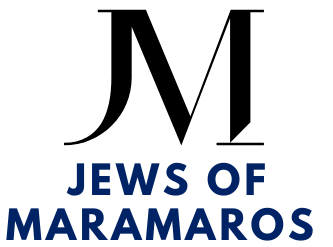In 1814 all Jews living in Maramaros County who were born in Galicia had to register themselves with the local government and prove that they had valid citizenship. Galician Jews living in Maramaros county without proper citizenship were to be evicted and returned to Galicia. Those Jews who wanted to remain in Maramaros had the option of petitioning the county for an exemption. The exemption requests had to contain signed affidavits by local witnesses testifying that the Jew in question had been living in Maramaros for from at least 1790 and that he was both an upstanding individual and financially stable.
Among these Jews who were to be expelled was Chazkel Lax from the town of Kabolacsarda/Kabolapatak1. Chazkel collected testimonies from various witnesses and submitted them to the commission. Among the affidavits is Chazkel’s own testimony which reads as follows:2
Letter addressed to “Right honorable sir Captain and Assessorâ€:
Having been deprived of my parents some 25 years ago, as an orphan at the age of 10 or 11 I was brought by Hersh Lax, the since deceased brother of my late father, from Poland to this county. I was raised here by my uncle (báty)3, got married, and have always tried to live a life under the direction of my [uncle] in a way as to not cause any disturbance or offense to anyone. In fact I tried to help everyone when needed, kept the ordinances of the authorities, as the attached testimonies prove, and further testimonies if necessary. I therefore humbly petition you not to make me return to my original place, because having left as child I know them not and they know me not. Awaiting your answer.
Sziget, 29th April 1814
Another affidavit was submitted by Mihály Szubo [Szabó?] which reads as follows:
I testify that I got to know the late Jew Hersh Lax 24 or 25 years ago, who lived at the Csárda at Kabola, and I visited him many times. He spoke many times in good terms of, and praised, the good and loyal conduct of Haszkel Lax, then yet a child. This Hersh Lax once having purchased from me two large barrels of rye, sent this Haszkel along with his carter to measure out the rye. Him being a child then, I stood (placed?) him in the barrel to measure out the rye. And I have also known him since then as a kind man overall. And to prove it, I am providing this signed testimonial.
Sziget, 29th April 1814.
This document is very helpful in tracing the origins of the Lax family, as follows.
Based on the above testimonials written in 1814 we learn that Chazkel’s uncle Hersh Lax was living in Kabolapatak in c1789 but that Hersh was dead by 1814. It is further inferred that Hersh lived continually in Kabolapatak. Turning to the available census and tax records I was able to find Hersh Lax listed in many such records in late 1700’s. Among those records are Jewish tax lists from Kabalopatak for 1788 and 1789. These lists record only 9 Jewish taxpayers in town, among them 2 Lax’s – Hersh Lax & Mendel Lax. Going back afew years I reviewed a 1785 Jewish tax list which recorded 7 taxpayers. The first Jew listed is Abraham, directly below him is “his son, Tzvi/Hersko”. The third person is “his son-in-law, Gershon/Gersil” and the fourth person is “his brother, Mendel”. It’s unclear whether Gershon & Mendel were son-in-law/brother of Abraham or if they were son-in-law/brother of Hersh. My own understanding is that Gershon was Abraham’s son-in-law and that Mendel was Hersh’s brother (= Abraham’s son) but it’s inconclusive. Either way, it’s clear that all of these people were part of one family unit.
1785 tax list part #1

1785 tax list part #2

This 1785 tax list has no surnames (since it was before the 1787 surname decree) but based on the 1788/9 tax list we can deduce that this family would eventually assume the Lax surname. The logic is as follows: Both the 1785 and 1788/9 tax lists have a Hersh and a Mendel who are part of a family unit. The 1785 list as discussed above and the 1788/9 list as indicated by the shared surname, Lax. Furthermore, there was only one Hersh and one Mendel mentioned in each of these tax lists respectively.
1788 tax list

Since Hersh Lax was one of the earliest Jews to carry the Lax surname, let’s go back further in time to trace his father Abraham. As noted, Abraham is the first person listed in the 1785 tax list, his family comprised most of the town (4 out of 7 householders) and his family paid the majority of the taxes in town (28.99 out of 46.67 total). This would indicate a family with deep roots in town. Looking further back we have tax lists for 1775, 1776 & 1777. In all of these tax lists there are only 5 Jewish taxpayers and one of them is “Abraham Izrael” which means Abraham ben Yisrael (or ben Azriel). It seems to me very likely that this is the same Abraham from the 1785 tax list and if so, we learn that Abraham’s father was Israel/Yisrael or Azriel.4
1777 tax list

The 1795 census from the entire Maramaros region records only 2 Lax families, both living in Kabolapatak – Hersh Lax with 2 sons and 3 daughters and Mendel Lax with 5 daughters. It’s only in the early 1800’s that the Lax family begins spreading out into other towns of the Maramaros region. For example, an 1815 tax list has Lax families living in Kabolapatak, Borsa & Sziget, the 1818 census add Alsoapsa and the the 1821/22 census adds Szelistye & Szarvaszo.
This analysis seems to indicate that the Lax families from Maramaros all descend from Kabolapatak and the patriarch of the family was Abraham ben Yisrael/Azriel5. As of yet, the Jewish Maramaros Y-DNA project has no Lax members. Once we can establish the Lax Y-DNA profile(s) I hope to revisit this study.
- Modern name: Iapa. The 1814 document refers to the area as Kabola, sometimes as Csárda and one time as “Csárda (hamlet) along the brook Kabola”. Most census records include the residents of Kabolcsarda and Kabalopatak under the single header of Kabolapatak. The modern-day Iapa includes both towns. ↩︎
- Free English translation from the original Hungarian ↩︎
- A modern reading of báty would be “older brother”, but the somewhat archaic use allows it to denote an uncle. ↩︎
- Gershon disappears from the Kabolapatak censuses and tax list from 1785 until the end of the century. In the early 1800’s there was a Gershon ben Elchanan/Chune Roth living in Kabolapatak along with his children Chune, Abraham (confirmed children) & Hersh, Mendel (unconfirmed children). It seems likely that this is the same Gershon. ↩︎
- If Mendel Lax was Abraham’s brother, rather than his son – that would mean that we have two patriarchs, Abraham and Mendel. ↩︎



